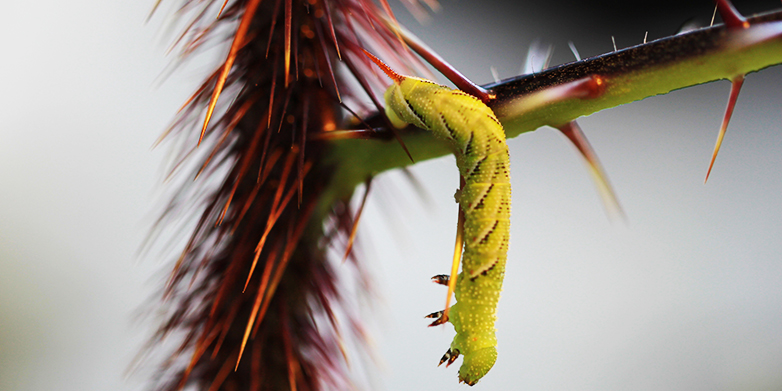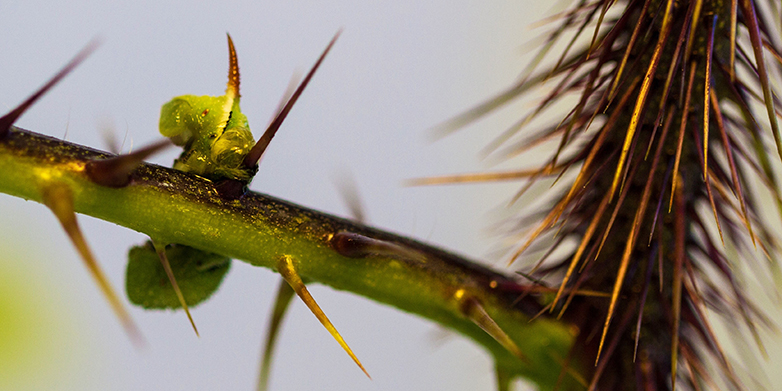Obstacle course for caterpillars
Spines and thorns keep hungry mammals at bay – or at least, that's the conventional wisdom. However, ETH researchers have now shown that spiky growths on plants make life difficult for caterpillars too. This finding could be important for crop breeding.

"Caterpillars can occasionally be skewered by the spines," says Rupesh Kariyat, a scientist at ETH Zurich's Institute of Integrative Biology. "But first and foremost, they restrict caterpillars' movement." This means that caterpillars have to overcome a veritable obstacle course – the prickly stem – to get from the leaf they've just devoured to their next course, being careful not to injure themselves along the way. It also takes them longer to climb or circumvent the stem. And if they try to take a shortcut by traversing from leaf to leaf, they risk falling off.
Lost time and falls have significant consequences, as the researchers have shown. "The caterpillars aren't able to eat as much, so they grow and develop more slowly," explains Kariyat. This gives the plants more time to grow and caterpillars' natural enemies more opportunities to find and eat them,
since caterpillars that scramble around on stems or crawl about uncamouflaged on the ground are easy prey for predators such as birds. In addition, depending on the density, shape and direction of growth of the plant's thorns, a caterpillar has little chance of clambering back up to continue feeding on the plant.
Chance discovery sparks interest
Until now, it was believed that spines and thorns evolved to prevent herbivorous mammals from feasting on a plant. "To date, few scientists have investigated their impact on insects," explains Mark Mescher, Professor at the Institute of Integrative Biology. Even his group only stumbled across the topic by chance. In an earlier experiment, the researchers discovered that their test plant, a nightshade, grew more spines after caterpillars had nibbled on leaves. "This led us to suspect that there was a connection between caterpillars and spines," explains Mescher.
The researchers investigated the issue further in various experiments, testing how long it took caterpillars to climb and devour entire plants with differing densities of spine growth. The team used various spiny test plants from their previous experiments as well as other well-protected plants from the nightshade family with a range of spine densities. The scientists also altered the number of spines artificially to rule out other effects.
Plant weapons with potential implications for agriculture
The researchers also believe that their discovery has real application potential, as caterpillars are a major problem for agriculture. Many crops, such as potatoes, tomatoes and aubergines are close relatives of the test plants, which belong to the nightshade family. Kariyat points out that "Aubergines originally had spines, but they have been lost during breeding."
For both researchers, it makes sense to bear spines in mind when growing crops. The same is true of plant hairs (known as trichomes), whose disadvantages for caterpillars the group also studied. The scientists see these physical weapons as part of the plants' overall defence strategy, which also includes chemical toxins and the emission of odor cues that attract beneficial insects.
For Mescher, spines and hairs both offer one key advantage: "In contrast to the plant's own toxins, which can be a problem for both pests and humans, hairs and spines on the stems of crops are completely harmless for consumers."

Reference
Kariyat RR, Hardison SB, De Moraes CM, Mescher MC. Plant spines deter herbivory by restricting caterpillar movement. Biology Lettres, published 10 May 2017. DOI: external page 10.1098/rsbl.2017.0176
Comments
No comments yet